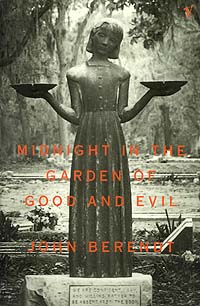Fact or Fiction?
The question of whether or not something is fact or fiction sounds as if it would be an easy one to answer. Just so you know, the objective ‘the student will distinquish fact from fiction’ is in the language arts curriculum from kindergarten through twelth grade. It isn’t always easy, however, to tell what is a fact and what is made up. That conflict is evidenced in our own country.
In literature, authors also grapple with this issue. Journalists, particularly, pay attention when a book is labeled ‘non-fiction’ but yet takes liberties with timelines and events. One such book was John Berendt’s Midnight in the Garden of Good and Evil, which was about the murder of a prominant resident of Savannah, Georgia. Midnight was a phenominal hit with readers. It was nominated for a Pulitzer Prize in the non-fiction category but was untimately disqualified because Berendt mentioned in the book’s forward that he had changed the order of a few of the events. Truman Capote faced similar criticism with In Cold Blood, a non-fiction about the gruesome murders of four family members in Kansas. Some sources refer to In Cold Blood as a non-fiction novel.


Of course, memoirs are considered non-fiction (If one can believe everything the author says about his or her life!) as are biographies, self-help books and books about science. Many non-fiction authors have great expertise in writing books about true events and real people in such a way that the stories read like works of fiction. Writers such as David McCullough, Lynne Olson, Jon Meacham and Doris Kearns Goodwin have enlightened us on well-known people and events while also providing hours of reading pleasure.
Another genre whose books have different degrees of truth is that of historial fiction. Some literary critics catecorize any novel set in the past as historical fiction. Most writers of historical fiction, however, conduct meticulous research and go to great lengths to explain what in the book really happened as depicted and what was made up. They go on to explain what ‘real’ character the fictional character was modeled after and/or what tangential characters are historical.

A new book by Margaret Verble, a Nashville, Tennessee, native and enrolled citizen of the Cherolkee Nation of Oklahoma, is a current example of historical fiction. Verble writes of a Cherokee woman named Two Feathers who performs at the Glendale Trolley Park and Zoo in 1926. Two Feathers and her horse dive from a platform into a tank twice a day to the awe of packed audiences. Of course, tragedy besets them and the rest of the story ensues. Yes, there really were horses that were forced to jump from a high platform into a dive tank, a practice that some people condoned but the Humane Society did not!! And there was a Glendale Zoo and a person named Two Feathers. The author, however, lets her imagination take over when she introduces an element of mystery and more than a little bit of mysticism. Reviewers recommend the book citing Verble’s endearing character development and the realistic picture she paints of racism in the South during the days of Prohibition.
